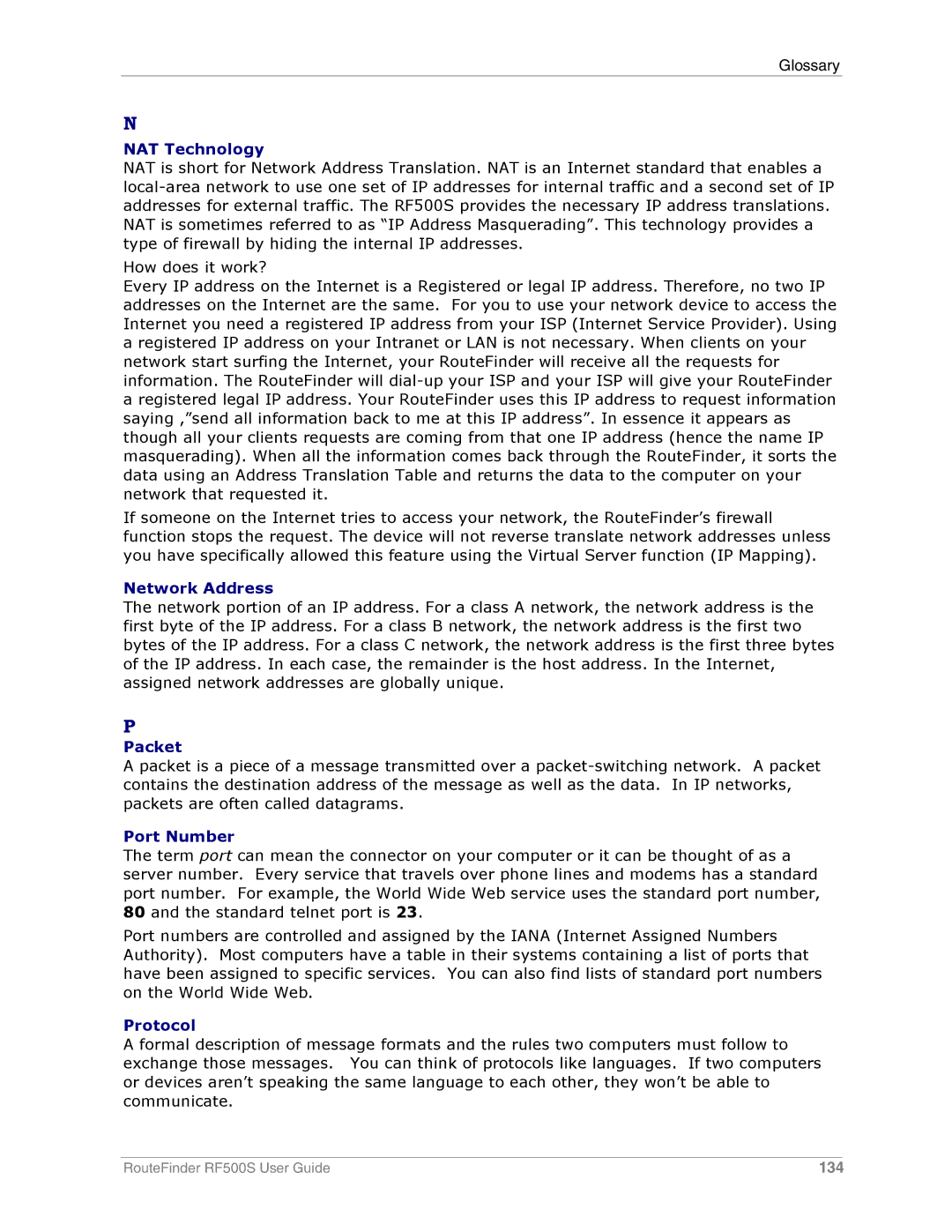
Glossary
N
NAT Technology
NAT is short for Network Address Translation. NAT is an Internet standard that enables a
How does it work?
Every IP address on the Internet is a Registered or legal IP address. Therefore, no two IP addresses on the Internet are the same. For you to use your network device to access the Internet you need a registered IP address from your ISP (Internet Service Provider). Using a registered IP address on your Intranet or LAN is not necessary. When clients on your network start surfing the Internet, your RouteFinder will receive all the requests for information. The RouteFinder will
If someone on the Internet tries to access your network, the RouteFinder’s firewall function stops the request. The device will not reverse translate network addresses unless you have specifically allowed this feature using the Virtual Server function (IP Mapping).
Network Address
The network portion of an IP address. For a class A network, the network address is the first byte of the IP address. For a class B network, the network address is the first two bytes of the IP address. For a class C network, the network address is the first three bytes of the IP address. In each case, the remainder is the host address. In the Internet, assigned network addresses are globally unique.
P
Packet
A packet is a piece of a message transmitted over a
Port Number
The term port can mean the connector on your computer or it can be thought of as a server number. Every service that travels over phone lines and modems has a standard port number. For example, the World Wide Web service uses the standard port number, 80 and the standard telnet port is 23.
Port numbers are controlled and assigned by the IANA (Internet Assigned Numbers Authority). Most computers have a table in their systems containing a list of ports that have been assigned to specific services. You can also find lists of standard port numbers on the World Wide Web.
Protocol
A formal description of message formats and the rules two computers must follow to exchange those messages. You can think of protocols like languages. If two computers or devices aren’t speaking the same language to each other, they won’t be able to communicate.
RouteFinder RF500S User Guide | 134 |
